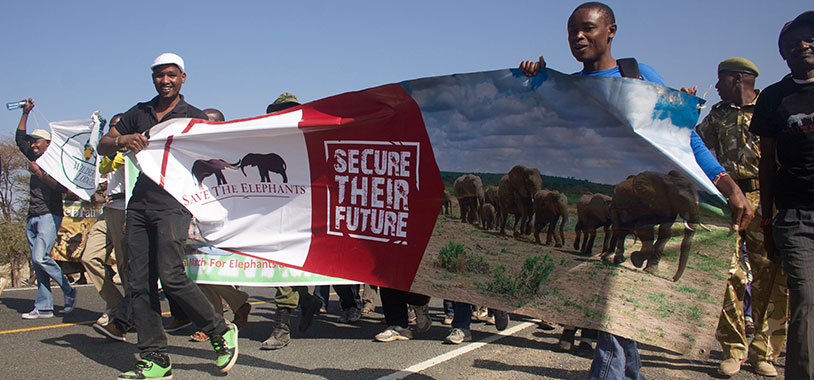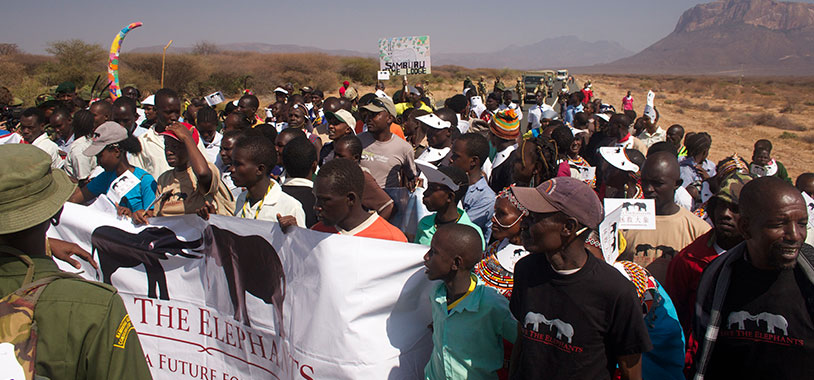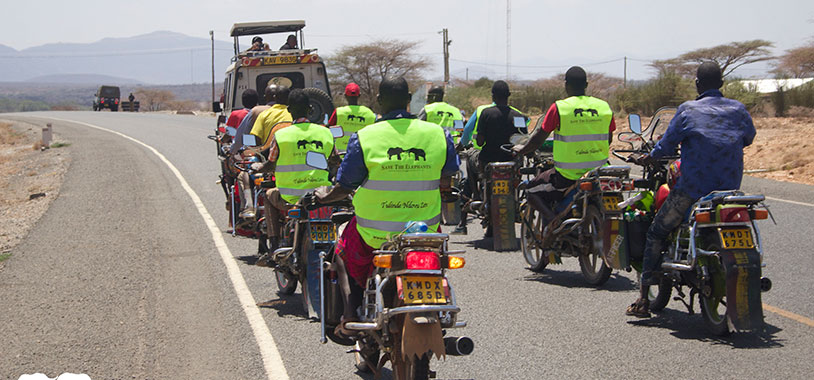The sun was hot and unforgiving when we started the 17 kilometre walk for elephants in Samburu, Northern Kenya. Primary and secondary school pupils had turned up, their energy and zeal energising the adults who’d shown up in large numbers for the Global March for Elephants and Rhinos.
Organised by Save The Elephants (STE) as part of the global movement, the Samburu edition must have been one of the hottest! The elephant-loving crowd marched on, one kilometer after another.
The march was graced by more than 300 people from around Samburu and many partner conservation organizations, among them the Kenya Wildlife Services, Samburu Lodge, Grevy Zebra Trust, the County Government of Samburu as well as the Samburu National Reserve.
The game rangers and wardens looked magnificent in their official attire and gear, marching and chanting pro-conservation songs. At the finish line, school children entertained the crowd with poems about elephants, and the women danced in traditional regalia and performed songs in praise of pachyderms.
“It’s big. It does not give birth to twins, and when it passes, it opens the way,” sang one Turkana song, as translated by David Daballen, STE’s Head of Field Operations.
“If they ask you who we are, tell them we are the ones taking care of wildlife in Samburu county,” sang another Samburu group as they danced around in circles, the back of their hands pressed to their foreheads in imitation of elephant trunks.
The Borana women sang and danced with their heads hunched low, one of them kept making this high pitched snorts and low rumble noise into the microphone – the sound so similar to that of an elephant that it had the crowd shrieking with laughter.
It was very evident from the speeches of the partner guests as well as from the participation of the community that conservation is at the heart of their co-existence.
One speech after another lauded elephants for their role in the ecosystem, as well as in local economies through access to school bursaries, healthcare and transport support, as well as employment opportunities.
One resounding message from the Kenya Wildlife Service team was the need for the community to be vigilant and hawk-eyed in rooting out the known poachers living among them. They warned that the ripple effects of poaching threatens the livelihoods of all, as well as creating insecurity and eroding our very humanity.




